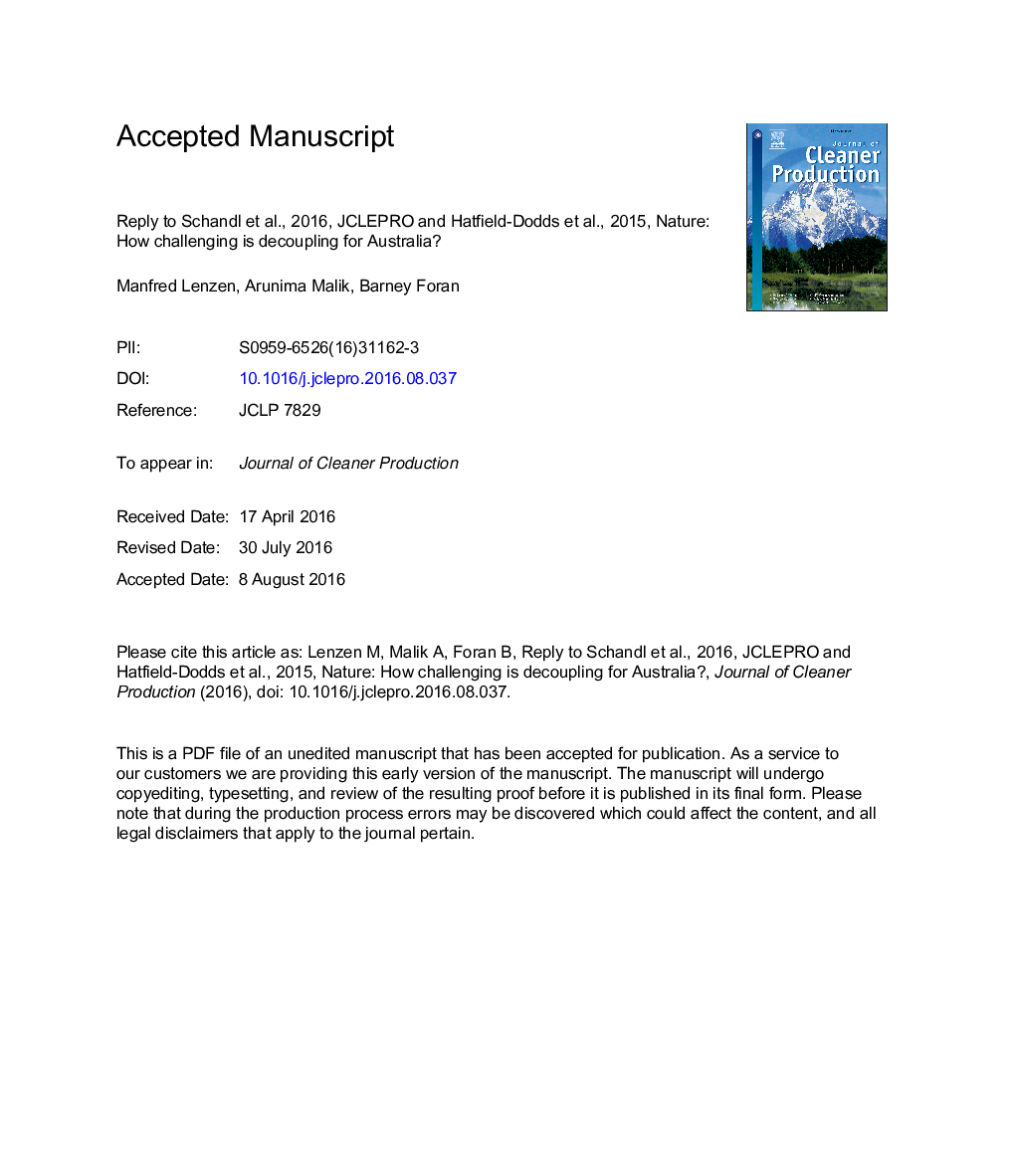| Article ID | Journal | Published Year | Pages | File Type |
|---|---|---|---|---|
| 8100676 | Journal of Cleaner Production | 2016 | 10 Pages |
Abstract
In this letter, we respond to the articles “Decoupling global environmental pressure and economic growth: scenarios for energy use, materials use and carbon emissions” by Heinz Schandl et al. (Journal of Cleaner Production, 132, 45-56) and “Australia is 'free to choose' economic growth and falling environmental pressures” by Hatfield-Dodds et al. (Nature, 527, 49-53). The authors of these papers suggest that policy settings are crucial for Australia to allow growing standard of living to coincide with lower environmental pressure and impact. Both papers make it clear that decoupling has not occurred in past, but stress that this does not mean it cannot occur in the future. Here, we undertake a comprehensive trend analysis by putting their decoupling scenarios into a historical context to assess the feasibility of decoupling economic growth from environmental impacts. To this end, we undertake a structural decomposition analysis to examine the drivers of a change in Australia's greenhouse gas emissions from 1976 to 2050. Using the well-known I=PAT equation, we appraise the contribution of population growth, affluence and technology in accelerating or decelerating the growth of emissions over the 75 year period. Our results suggest that population growth and affluence are key accelerators of greenhouse gas emissions. We argue that in order to decrease emissions from fuel consumption, unprecedented improvements in emissions intensity will be required both in Australia and globally.
Related Topics
Physical Sciences and Engineering
Energy
Renewable Energy, Sustainability and the Environment
Authors
Manfred Lenzen, Arunima Malik, Barney Foran,
